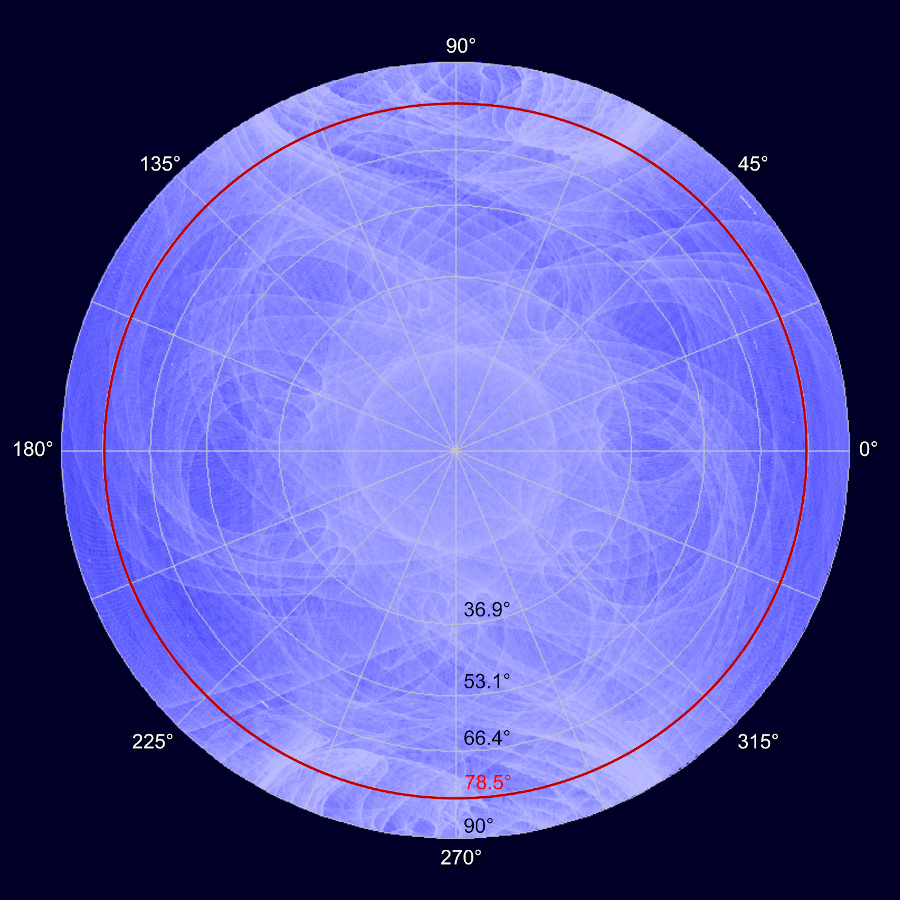
 Credit: NASA/DOE/Fermi LAT Collaboration
Credit: NASA/DOE/Fermi LAT Collaboration
The Labors of Fermi
They also serve who scan and watch. For over 12 years, the Fermi Gamma-ray Space Telescope has been orbiting earth, surveying the entire sky in gamma rays every three hours, building up long histories of some of the most energetic sources and events ever detected, and cataloguing the births of black holes by their natal gamma-ray burst outcries. The image above is called the "Fermi Spirograph". This image shows the fish-eye field of view of Fermi's Large Area Telescope over the four year period from launch in 2008 to 2012, centered on a famous source, the Vela Pulsar (a gamma-ray emitting, rapidly spinning neutron star). The LAT has an enormous field of view, most sensitive at the center of the detector (the center of the image above), decreasing with increasing off-axis angle. The red circle at an off-axis angle of 75 degrees in the image is about the limit of useful sensitivity for the LAT, though the LAT can detect gamma rays even beyond this. Take a look at the beautiful movie of the LAT's motion over these four years to see how this image was built up, orbit-by-orbit. Scientists expect that Fermi will continue watching the sky for many years to come, finding new, exciting, energetic sources (like the merger of two neutron stars in 2017 which - literally - shook the Universe).
Published: September 7, 2020
<
HEA Dictionary ● Archive
● Search HEAPOW
● Other Languages
● HEAPOW on Facebook
● Download all Images
● Education ● HEAD
>

Each week the HEASARC
brings you new, exciting and beautiful images from X-ray and Gamma ray
astronomy. Check back each week and be sure to check out the HEAPOW archive!
Page Author: Dr. Michael F. Corcoran
Last modified Monday, 26-Feb-2024 17:24:22 EST


